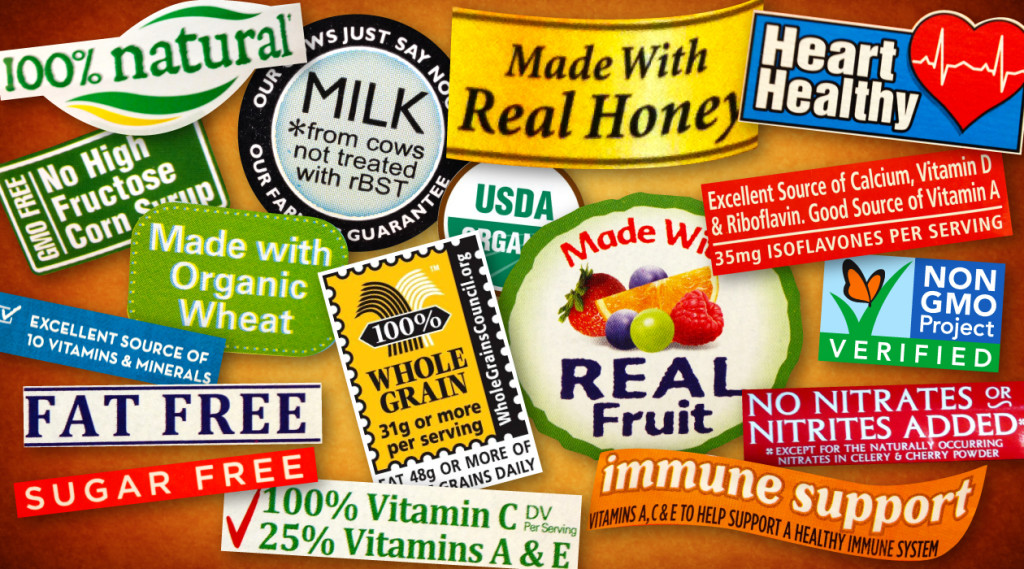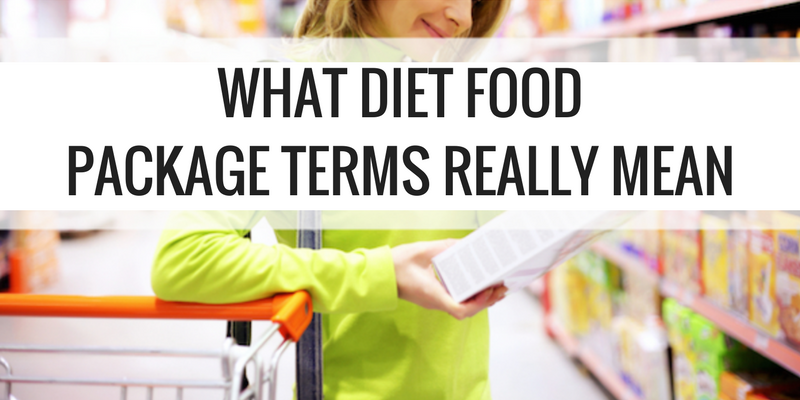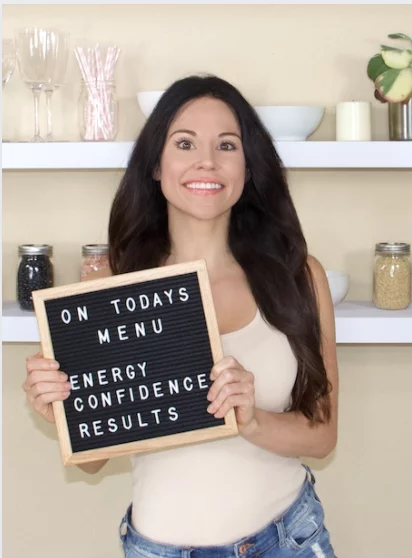Last Updated on January 27, 2019
When you finally decide it’s time to lose weight, it is common to head to the grocery store to stock up on ‘diet’ food. A lot of people rely heavily on foods labeled; ‘free,’ ‘low,’ ‘light,’ or ‘reduced,’ to help them accomplish their goal. Not all ‘diet’ foods are created equally. Not all ‘healthy’ foods are good for weight loss. Not all ‘diet’ foods are really diet foods . Watch out! and avoid Slim Success Down Sabotage with these Tips to understand what food packaging terms really mean and what to look out for.
Here are a few common ways people unknowingly sabotage their weight loss efforts with ‘diet’ foods:
- Some ‘diet’ foods have smaller serving sizes. It’s easier to over-eat serving sizes. You think you’ve only eaten 150 calories, when really you’ve had 450!
- A ‘free’ food is not a green light to empty the container! Those calories add up fast!
- A ‘light’ food may be lighter in calories than a full calorie option. But, it could be full of other nutrients that are counterproductive for weight loss, like fat and sugar.
- Some diet foods that contain sugar, may prompt your blood sugar to crash, triggering hunger or food cravings. Hunger and cravings, are two feelings that someone trying to lose weight, should keep to a minimum.
what diet food packaging terms really mean
Labeling on food packaging is just one thing to watch out for in the grocery store. In addition to nutrition labels, often times there are tag lines and “patches” found on food packaging designed to get your attention so you will buy it assuming it will help you lose weight.

“Free”
If you see the word “Free” on a product it means that a serving must either be:
- Calorie free – it has less than 5 calories
- Cholesterol free – less than 2 milligrams of cholesterol
- Fat free – less than .5 grams of fat
- Sodium free or salt free – less than 5 milligrams of sodium
- Sugar free – less than – .5 grams of sugar
Free on a food label a golden ticket for a person trying to lose fat. Be aware of your serving sizes. Look for a larger serving size with fewer calories, because you will be full without having to spend a lot from your calorie bank. A Fat Free food that has a serving size of ½ cup is better than one that is 2 tablespoons. “Free” is commonly found on condiments, toppings, and sprays.
Pay close attention to the serving size of cooking sprays, because there are literally hundreds of servings per container. You may think its calorie free, but often times the serving size is 1/3 of a second of spray time. Seriously! If you use a can of it every two weeks, chances are you’re using dozens of servings at one time.
“Low”
A serving is considered to be “Low” for a variety of different nutrients, if:
- Low calorie – it must have less than 40 calories
- Low in cholesterol – it contains less than 20 milligrams of cholesterol and 2 grams or less of saturated fat
- Low fat – must have 3 grams or less of fat
- Low in saturated fat – contains one gram or less of saturated fat
- Low sodium – less than 140 milligrams of sodium
- Very low sodium – less than 35 milligrams of sodium
Low is another great term to find on a food label and it is even better if the portion is substantial. Again, pay attention to your serving sizes and measure, measure, measure. Low fat sour cream has 40 calories per serving and it can add up fast. If you have 3 servings, you’re eating 120 calories. If you are only supposed to have 250 calories, nearly half of your meal allowance is coming from a calorie dense condiment. Is it worth it?
“Light” or “Lite”
These servings:
- Contain 1/3 fewer calories and 50% less sodium or they have
- 50% less fat and 50% less sodium, than the regular full-calorie, full-fat product does
Besides “Low” and “Free” this is the term you want to see on your cottage cheese and yogurt. It’s really important to be aware of your serving sizes with “light” products. Accept that “Light” is not a green light to eat as much as you’d like to!
“Reduced” “Less” or “Fewer”
These servings have to:
- Contain 25% or less of a nutrient with 2 grams or less of saturated fat or they
- Contain 25% less calories than the regular product with 2 grams or less of saturated fat, than the regular full-calorie, full-fat product does
A reduced calorie option is better than a regular product, but if you can find a light version it is even better for fat loss. Avoiding these calories altogether is better, especially if it’s a condiment or topping.
“Percent Fat Free” This one is tricky and potentially hazardous to your fat loss efforts if you don’t read the nutrition label carefully.
- “Percent Fat Free” refers to a low fat or fat free product that must accurately state the amount of fat per 100 gram serving.
Confused? These terms apply to the serving size even though they’re on the packaging. A jar of pasta sauce may say that it is 97% fat free. But, that means 97% of your ½ cup (100 gram) serving size is fat free and 3% does contain fat.
“High” “Rich In” or “Excellent Source of”
These terms mean the product:
- Contains 20% or more of the Recommended Daily Value (RDV) of a given nutrient
When you see “EXCELLENT SOURCE OF WHOLE GRAINS” then that food has a considerable amount of whole grains. But, you still have to pay attention to the calorie count and other nutrients in the serving.
Food companies will attempt to camouflage less desirable nutrients like foods that are high in calories, sugar, and trans fats. Companies will brand packaging with a positive quality about the food instead. Food labels will never say “A High Source of Saturated Fats” or “Rich in Cholesterol.” Be aware when you find a product that says “Excellent Source of Calcium” or “High in Vitamin C,” because it may be loaded with calories, sugar, and fat.
“Good Source”
Means that the food product contains between 10% to19% of the Recommended Daily Value (RDV) of a given nutrient. If you see “GOOD SOURCE OF FIBER,” the product has an optimal amount of Fiber. As with the “An Excellent Source” example just because something is a “Good Source,” does not automatically mean it will help you lose fat.
“Healthy”
A product is considered “healthy” from a labeling perspective if:
It is low in fat and saturated fat, Has 480 milligrams or less of sodium per serving, and it contains at least 10% of the Recommended Daily Value (RDV) for one of the following nutrients: vitamin A or C, calcium, iron, protein, or fiber
From the requirements needed to qualify for a “Healthy” seal on the product, yes, this option does appear to be healthy, but that doesn’t mean it is ideal for fat loss. It could be high in calories or contain sugars. We have to be aware when we see a high sugar food that is labeled “healthy” with a food that is high in fat, too. Remember that the sugar will be burned first, which makes it more likely for fat to be stored.
“Lean”
The term lean is commonly used to describe the fat content of meat, poultry, fish, and shellfish:
- A “lean” product must have less than 10 grams of fat,
- AND less than 4 grams of saturated fat,
- AND less than 95 milligrams of cholesterol per serving and per 100 grams – about 3 1/2 oz
Lean ground poultry or beef is typically a combination of dark/white meats or high/low fat cuts of meat that are mixed together. It’s better to get protein products that are….
“Extra Lean”
Another term used primarily to describe the fat content of meat, poultry, seafood, and shellfish:
An “extra lean” product must contain less than 5 grams of fat AND less than 2 grams of saturated fat, AND less than 95 milligrams of cholesterol per serving and per 100 grams / about 3 1/2 oz.
“Natural”
This term isn’t really regulated. It’s used to make you think it’s automatically good for you… and weight loss. Basically, it means the ingredients aren’t processed. But, even natural ingredients can slow fat loss when they’re paired together. Sugar + Fat = Fat stuck on you.




